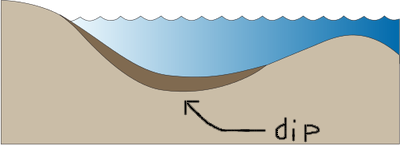

Some warnings and rules:
Observe beach regulation signs posted at street ends, which list no glass on beach, no open fires and no dogs.
Only permit parking is allowed on North and South Pacific Avenues parallel to the homes, in front of garages. Permits can be obtained from Huntington Beach.
No overnight RV parking on the Green Belt. RVs must be moved by 9:00PM.
Always pick-up after your dog.
Dogs must be leashed.
Context:
At this location on Sunset Beach, we will be learning about naturally occurring sandbars. Sandbars can also be called sandbanks or shoals. We will use the term "shoal" in this lesson. Shoals can be completely submerged in water or they can extend out into the water from the main landform. Shoals develop where water promotes the deposition of sediment, which is inclusive of sand, silt, dirt, and/or small pebbles. Shoals are generally long and narrow, but can be quite large. Sometimes, if large enough, shoals can cut off a smaller body of water from another, creating a little "land bridge." Shoals can form a few meters long, or stretch over hundreds of kilometers. These build-ups of sediment are found all over the world in oceans, streams, rivers, and lakes. Shoals create a shallowing of the water, which is where the name comes from ("shoal" means "shallow").
Geology and Formation:
When passing over a sandbar, waves tend to "shoal," or slow, increase height, and break (I know, it's the same word). Waves can also actually change direction by dropping off the bar and then hitting the beach. This sudden clash of the water and the small bank of sand throws the energy of the wave back out to sea. Shoals form right where waves break. This is due to the shoreward current set up by the incoming waves, and the counter-current on the ocean floor that pulls sediment seaward. Sand is carried away by a strong seaward current and then dropped off further off-shore where the current reaches the wave break. In short: the sediment is taken from close to shore and dropped out where the waves break.

This process occurs constantly, and is magnified during a storm. During fair weather, if there is not a strong seaward current, sediment is actually taken up to shore.

Logging your find:
Using your new knowledge about sandbars, go claim this Earthcache! Please send an e-mail with the following:
•The title of this earthcache
•# of people in your group
•Answers to:
1) Venture out into the water (check conditions first and be safe). How far out did it take you to reach the top of the sandbar? (Hint: it should not be more than 10 meters)
2) At the dip's bottom, estimate (you can measure if you want a more precise answer) the depth. Or, what part of your body does the water come up to before the sand slopes up again to the sandbar?
•If conditions do not allow you to go into the water, answer the following:
1) Do you see any waves changing direction?
Sources:
-http://ian.umces.edu/imagelibrary/displayimage-search-0-6113.html
-http://www.learnnc.org/lp/editions/cede_hurricanes/150
-http://en.m.wikipedia.org/wiki/Shoal
Have fun and don't be afraid to get wet!